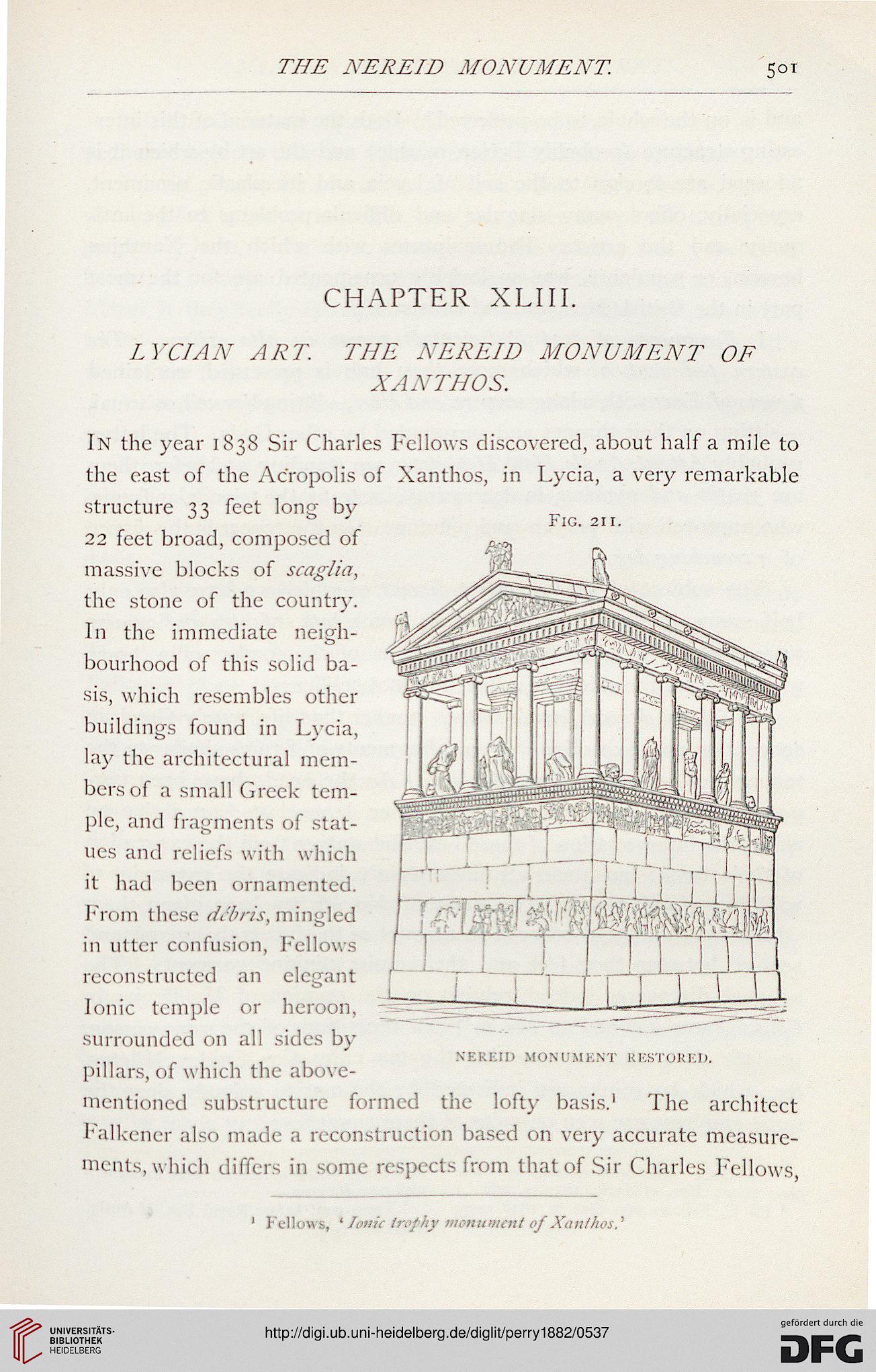THE NEREID MONUMENT. 501
CHAPTER XLIII.
LYCIAN ART. THE NEREID MONUMENT OF
XANTHOS.
In the year 1838 Sir Charles Fellows discovered, about half a mile to
the east of the Acropolis of Xanthos, in Lycia, a very remarkable
structure feet loncf by
jj & j Fig. 211.
22 feet broad, composed of
massive blocks of scaglia,
the stone of the country.
In the immediate neigh- ^'^^-Z^--^^ "T ^-S^"^t>
bourhood of this solid ba- S
sis, which resembles other
buildings found in Lycia,
lay the architectural mem-
bers of a small Greek tem-
ple, and fragments of stat-
ues and reliefs with which
it had been ornamented.
i__J____l
1X1X3
From these debris, mingled
in utter confusion, Fellows
reconstructed an elegant
Ionic temple or hcroon,
surrounded on all sides by
nekkii) monument RESTORED,
pillars, of w hich the above-
mentioned substructure formed the lofty basis.1 The architect
Falkcner also made a reconstruction based on very accurate measure-
ments, which differs in some respects from that of Sir Charles Fellows,
1 Fellows, 'Ionic tn>/7ir monument of Xanthos.'
CHAPTER XLIII.
LYCIAN ART. THE NEREID MONUMENT OF
XANTHOS.
In the year 1838 Sir Charles Fellows discovered, about half a mile to
the east of the Acropolis of Xanthos, in Lycia, a very remarkable
structure feet loncf by
jj & j Fig. 211.
22 feet broad, composed of
massive blocks of scaglia,
the stone of the country.
In the immediate neigh- ^'^^-Z^--^^ "T ^-S^"^t>
bourhood of this solid ba- S
sis, which resembles other
buildings found in Lycia,
lay the architectural mem-
bers of a small Greek tem-
ple, and fragments of stat-
ues and reliefs with which
it had been ornamented.
i__J____l
1X1X3
From these debris, mingled
in utter confusion, Fellows
reconstructed an elegant
Ionic temple or hcroon,
surrounded on all sides by
nekkii) monument RESTORED,
pillars, of w hich the above-
mentioned substructure formed the lofty basis.1 The architect
Falkcner also made a reconstruction based on very accurate measure-
ments, which differs in some respects from that of Sir Charles Fellows,
1 Fellows, 'Ionic tn>/7ir monument of Xanthos.'




